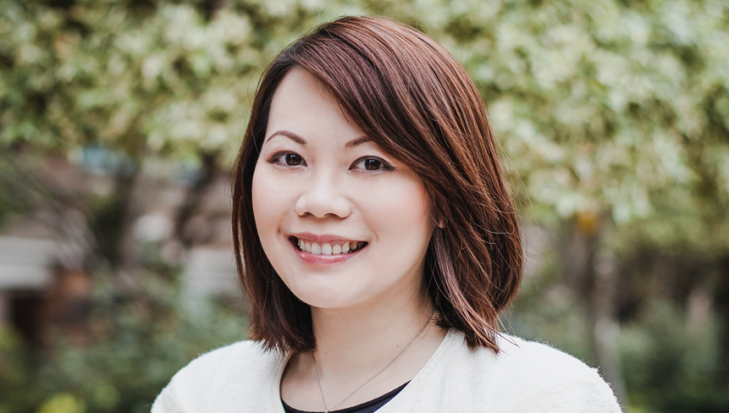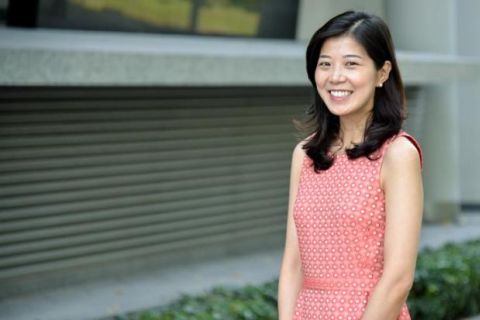
Associate Professor Angela Leung at the SMU School of Social Sciences finds that multicultural experience is a useful lens through which to analyse creative performance.

Photo Credit: Associate Professor Angela Leung
By Dora Yip
SMU Office of Research (22 Sep 2014) – Multiculturalism is a fact of modern life. From overseas exchanges to leisure travel, communities are now more connected than ever before. As cultural connectivity continues to become a greater part of everyday living, psychologists are showing greater interest in understanding how and when individuals thrive in multicultural environments.
“As the global workforce gets more diverse rapidly, research on multicultural experience and creativity becomes especially relevant,” says Associate Professor Angela Leung from the Singapore Management University (SMU) School of Social Sciences. Her research focuses on two major areas: firstly, whether multicultural experiences lead to more creative outcomes; and secondly, whether there is a link between bodily experiences and creativity.
Are multicultural individuals more creative?
In one study, Professor Leung exposed European American undergraduates to one of these three conditions using a 45-minute multi-media slideshow: (i) single culture through presenting pictures of items that depicted either the American culture (e.g., the Statue of Liberty, a hamburger) or the Chinese culture (e.g., the Great Wall, hotpot dinner) on each slide; (ii) dual cultures through presenting pictures of items that depicted American culture and pictures that depicted Chinese culture on each slide; and (iii) fusion of cultures (e.g., a picture of Starbucks’ mid-Autumn festival mooncakes). She found that participants demonstrated better creative performance when exposed to dual cultures and fusion of cultures, compared to those who were exposed to a single culture. Their creative performance persisted five to seven days after initial exposure.
“Initially, I thought those who were exposed to the fusion culture would perform the best. But the tendency was that those who were exposed to two different cultures showed more creativity. Perhaps the exposure to separate cultures gave them the space to engage in cognitive juxtaposition of the ideas from the respective cultures. When they seek to actively compare and contrast the presented cultures, they delve deeper into the different cultural representations and receive more creative inspirations,” she says.
Another significant finding from her research was that while multicultural individuals tended to be more creative, other considerations had to be taken into account, such as how open and receptive an individual was to new experiences.
In a different study of European American undergraduates, Professor Leung used the extent of participants’ multicultural experiences and their openness to experience trait to predict how well they would perform in creative tasks. Such “openness” was measured by a self-assessment survey that gauges participants’ receptivity to new experiences.
The creative tasks included coming up with novel uses of a garbage bag and writing down the first 20 occupations that came to mind. Professor Leung’s results showed that individuals with more extensive multicultural experiences were more likely to be creative if they also possessed the openness to experience trait. Interestingly, among those who were not open to new experiences, having more extensive multicultural experience was associated with lower creative potential.
These findings have implications for how creativity is promoted in schools, says Professor Leung. “Our results challenge the conventional wisdom that multicultural experiences alone are sufficient to raise creative potential in students. For close-minded students, experiences with other cultures could be overwhelming, threatening and even shocking,” she says. Hence, a learning environment that not only exposes one to a variety of cultures, but also encourages an open mindset, is the most conducive to the development of creative potential, she says.
The mind-body link
Professor Leung’s recent research looked at how creativity could be inspired by physical movement. “Advice to spur creativity typically comes in the form of metaphors. We are encouraged to ‘think outside the box’ and to ‘put two and two together’. I am interested in exploring the connection between concrete bodily experiences and creative cognition,” she explains.
Together with her PhD student, she conducted a set of studies to better understand the link between body and mind, and how enacting metaphors for creativity would enhance creative problem solving.
In one study, she asked three groups of participants to perform two different creative tasks. One was to generate a caption for an ambiguous picture and the other was to brainstorm what different configurations of LEGO bricks could represent. For both tasks, unconventional and unexpected solutions would indicate greater creativity. The study had a catch: these creative tasks had to be performed while executing various physical movements. One group was to walk freely, another in a fixed, rectangular path around the lab, while the third was to remain seated. Interestingly, the free walking group generated more creative ideas compared to the groups that had to walk a fixed path or remain seated.
“This experiment confirmed our prediction. If you enact the bodily experience of walking out of the box, it helps to free up your mind and therefore enhances flexibility and creativity. The fixed walking and sitting groups did not differ in their creative performance,” Professor Leung explains.
“One major implication that students and the public should be aware of is that taking a leisurely walk outdoors or freely pacing around the office may benefit creativity. From a management perspective, more open space in offices or schools such as lounge areas or the lack of cubicle dividers could stimulate creativity,” she adds.
How cosmopolitan are you?
Professor Leung’s latest project sees her trying to develop a measurement scale for a person’s cosmopolitan orientation. She notes that such measures are not only useful to organisations when designing training programmes for their employees, but have potential implications on a societal level. Her preliminary research already shows a positive link between an individual’s cosmopolitanism and his or her support for environmental conservation.
“Cosmopolitan oriented individuals tend to endorse global altruism that confers a global conception of moral citizenship. This attitude fosters a stronger sense of collective obligation and responsibility to eradicate environmental problems. When cosmopolitan individuals base their moral rights to go beyond a national context, they are more likely to feel an obligation to preserve the integrity of the nature not just for the benefit of the fellow citizens of their own nation-state, but also for the collective benefit of the citizens around the world,” she explains.
A proponent of multiculturalism in the society, Professor Leung believes that her research is also best approached from diverse angles. She is keen to explore interdisciplinary projects with SMU colleagues who seek to make sense of societal level big data related to multiculturalism and cosmopolitanism, as well as those who study the organisational implications of cultural diversity.
See More News
Want to see more of SMU Research?
Sign up for Research@SMU e-newslettter to know more about our research and research-related events!
If you would like to remove yourself from all our mailing list, please visit https://eservices.smu.edu.sg/internet/DNC/Default.aspx

